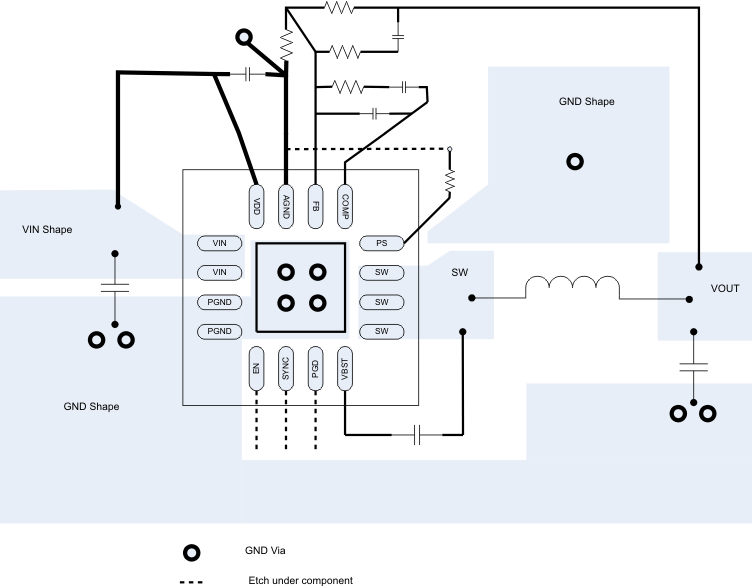SLUSA68A December 2010 – October 2016 TPS53310
PRODUCTION DATA.
- 1 Features
- 2 Applications
- 3 Description
- 4 Revision History
- 5 Pin Configuration and Functions
- 6 Specifications
- 7 Detailed Description
- 8 Application and Implementation
- 9 Power Supply Recommendations
- 10Layout
- 11Device and Documentation Support
- 12Mechanical, Packaging, and Orderable Information
10 Layout
10.1 Layout Guidelines
Good layout is essential for stable power supply operation. Follow these guidelines for a clean PCB layout:
- Separate the power ground and analog ground planes. Connect them together at one location.
- Use four vias to connect the thermal pad to power ground.
- Place VIN and VDD decoupling capacitors as close to the device as possible.
- Use wide traces for VIN, VOUT, PGND and SW. These nodes carry high current and also serve as heat sinks.
- Place feedback and compensation components as close to the device as possible.
- Keep analog signals (FB, COMP) away from noisy signals (SW, SYNC, VBST).
- See TPS53310 evaluation module, Using the TPS53310EVM-755, A 3-A Eco-mode™ Integrated Switcher With Master-Slave (SLUU826), for a detailed layout example.
10.2 Layout Example
 Figure 27. TPS53310 Layout Example
Figure 27. TPS53310 Layout Example